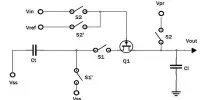By creating a mechanically very robust polymeric gel electrolyte and incorporating it into the battery as a layer to protect the lithium metal anode, a National Institute for Materials Science (NIMS) research team has successfully improved the cycling performance of a lithium metal battery. This accomplishment might make it much easier to use lithium metal anodes, which have the potential to be very high performance anode materials.
The widespread use of digital technologies, the rising appeal of electric vehicles, and the expanding usage of renewable energy sources are all contributing to the rapid transformation of society today.
These changes have led to an increase in demand for lithium secondary batteries with improved performance. Theoretically, lithium metal anodes can store a lot of energy but have relatively low operating potentials.
The process of lithium dissolution and deposition, which takes place as the battery is charged and discharged, is vulnerable to deterioration, which reduces the batteries’ capacity for charge-discharge cycles and raises safety issues.
Therefore, there is a need for new technologies that can stabilize the charge-discharge cycles of secondary batteries containing lithium metal anodes.
This research group created organic solvent electrolytes with a high concentration of lithium salts and a hydrogen-bonded polymer to create physically robust and flexible gel electrolytes.
The researchers then used this gel electrolyte as a man-made layer to cover the lithium metal anode for protection. The protective layer’s inclusion considerably increased the battery’s cycling stability, according to experiments.
The study group intends to refine the gel electrolyte for use as a protective layer and test the effectiveness of the layer when paired with various electrolytes and next-generation cathodes in upcoming studies.
The group anticipates that this technology will aid in efforts to commercialize next-generation lithium secondary batteries using lithium metal anodes.
















